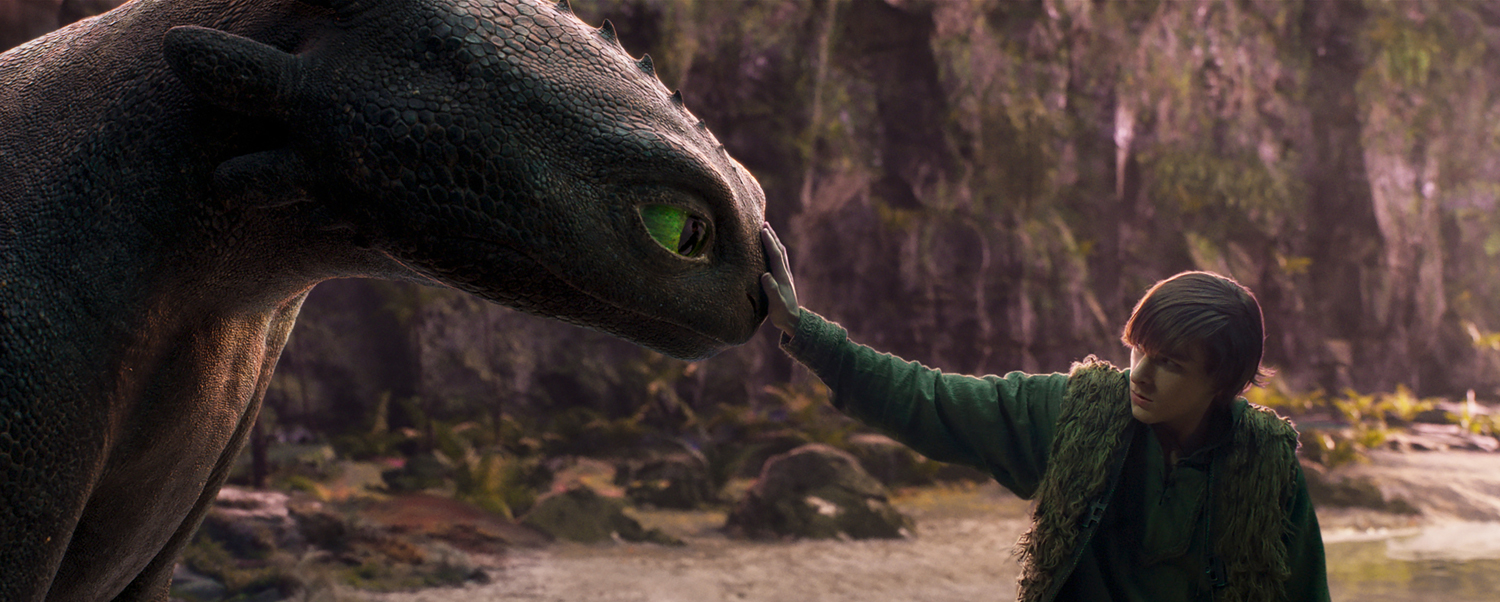
Mason Thames as Hiccup with his Night Fury dragon, Toothless, in a scene from "How to Train Your Dragon." (Photo courtesy of Universal Studios)
The floodgates have opened. Summer is here, and that means families with younger children, a coveted bracket for movie studios peddling their big-budget wares, find more options to choose from at the multiplex. It's a good thing, too, since these viewers tend to be underserved for a sizable chunk of the movie year.
Cue the upturned noses from some friends and colleagues who sneer at the prospect of wading through what they deem innocuous kiddie fare, and thus not worthy of their attention. This is where they and I part ways. If you've read these pages long enough, it's already crystal-clear that this reviewer heartily seeks the chance to catch and review animated and live-action films geared at this large swath of the moviegoing public. Perhaps it's because I consider to be well-attuned to my inner child, or because a part of me is still that wide-eyed dreamer who was taken to see “Pinocchio” at age 6 and never looked back.
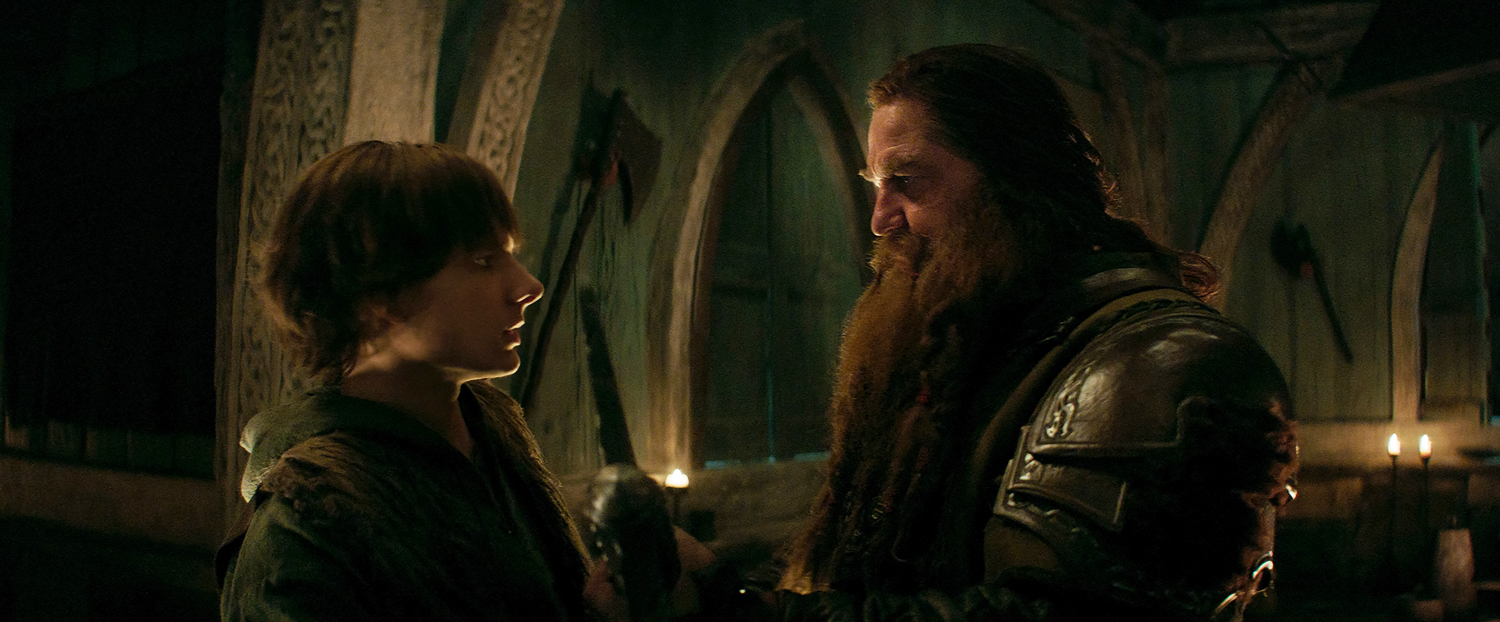
Mason Thames as Hiccup and Gerard Butler as Stoick in a scene from “How to Train Your Dragon.” (Photo courtesy of Universal Studios)
But yes, watching most-ages-are-welcome fare is one of the things I look forward to the most during summer movie season: the throwback vibes, the spare simplicity, the fanciful worldbuilding, those larger-than-life emotions. Nevertheless, these days I'm hopeful yet guarded when it comes to my expectations, and family films are no exception.
Two high-profile contenders are out now in theaters seeking those matinee-audience dollars. One sees a rival studio entering the live-action remake arena that Disney has cornered, with mostly lucrative results, out of their animated hits from past decades. The other is the latest effort from the creative folks at Pixar, and no, it's not a sequel. Let's find out which one has got the edge.
“How to Train Your Dragon”: The mood is somber, and the color palette follows suit. The Isle of Berk, the setting for DreamWorks Animation's 2010 adventure and this new retelling, is a barren dump. Wild mood swings beset the weather, but worse than that are the titular pests: scaly fire breathers with a penchant for wreaking havoc.
Dragons are the bane of the Viking tribe that resides in Berk, and an obsession for its chief, Stoick the Vast (Gerard Butler, reprising the role he voiced in the original), who aims to find the dragons' nest and end this threat once and for all.
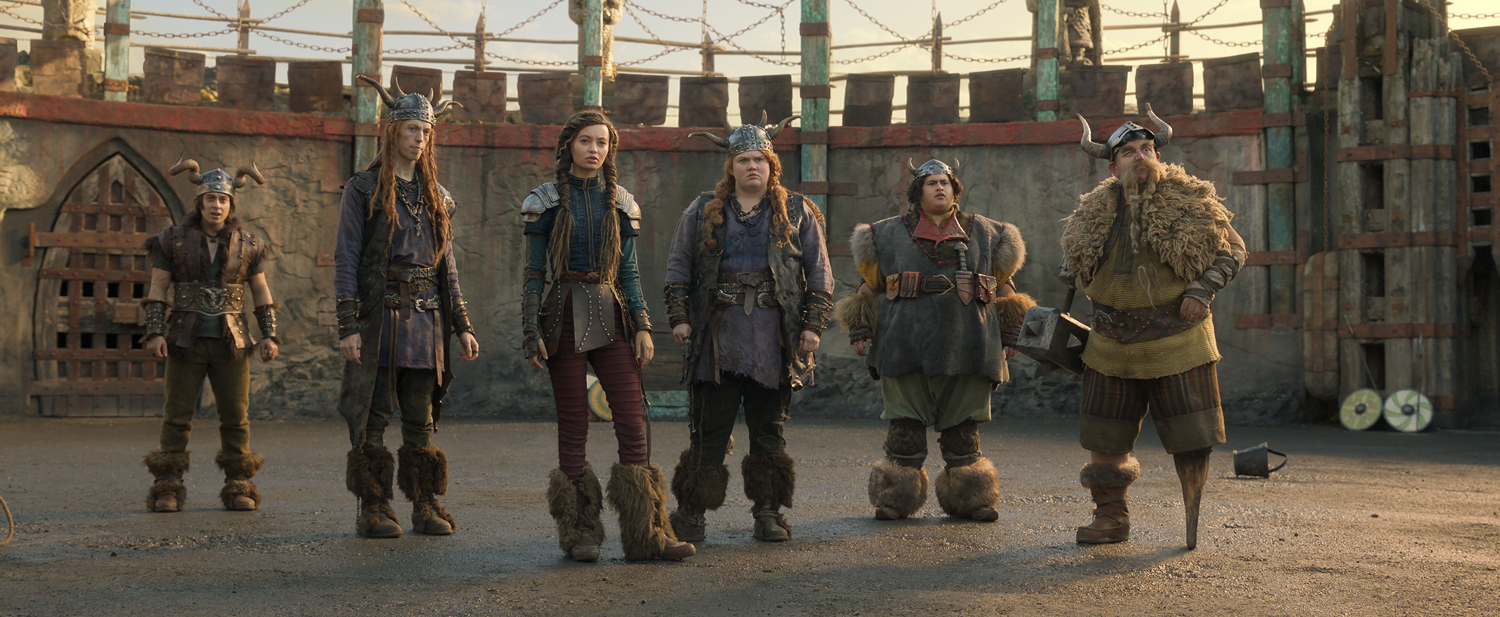
Gabriel Howell as Snotlout, Harry Trevaldwyn as Tuffnut, Nico Parker as Astrid, Bronwyn James as Ruffnut, Julian Dennison as Fishlegs and Nick Frost as Gobber in a scene from “How to Train Your Dragon.” (Photo courtesy of Universal Studios)
But this is not Stoick's story. This dragon tale, adapted, like the animated trilogy that precedes it, from British author Cressida Cowell's children's books, zeroes in on Hiccup, a scrawny 16-year-old with an inferiority complex. He's an ugly duckling who sticks out like a sore thumb. That's probably not a good thing when Stoick is your dad and you're widely regarded as an embarrassment who, on top of everything else, attracts trouble like a magnet.
When Hiccup shoots down the Night Fury, an elusive dragon no human has seen, with a mechanical contraption of his making, Stoick doesn't believe him and focuses on the teen'd disobedience and the property damage he triggered. Still, the Viking chief heeds the advice of his friend, the blacksmith Hobber (an understated Nick Frost), and enrolls his son in Hobber's dragon-fighting class alongside other teens, including the fierce, hyper-driven Astrid (Nico Parker).
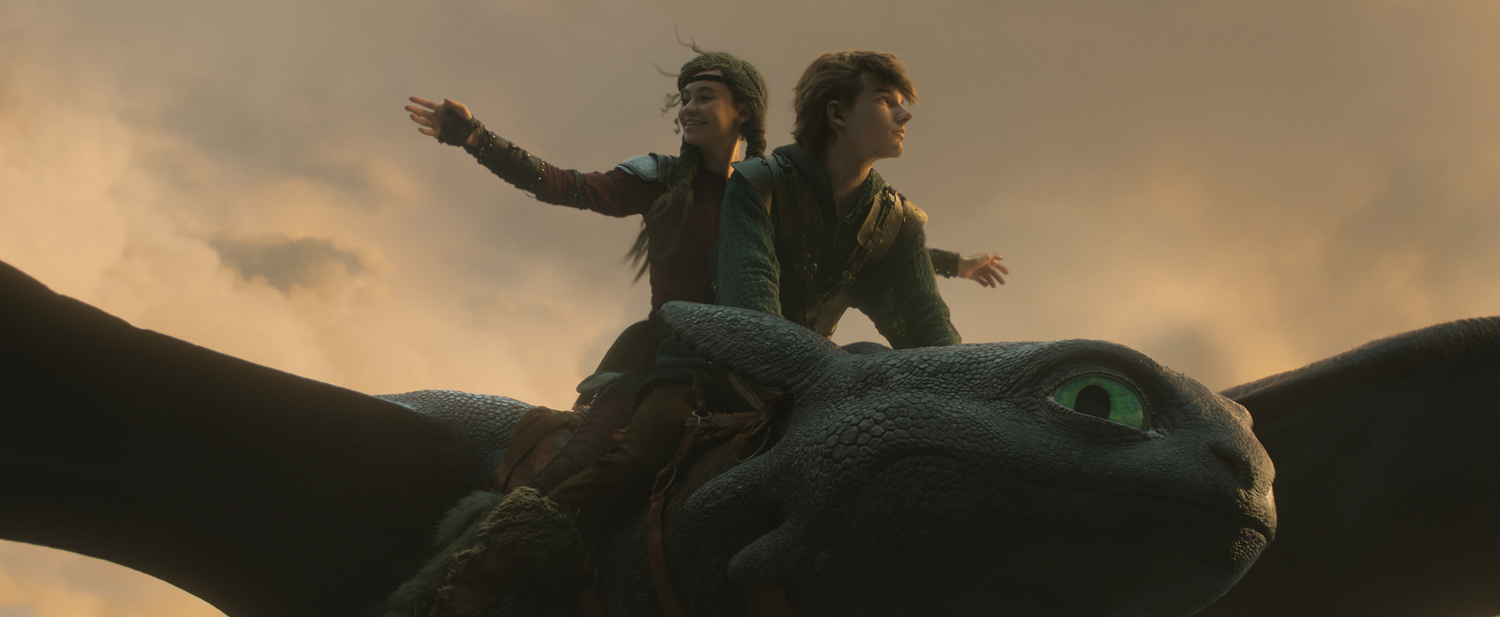
Nico Parker as Astrid, Mason Thames as Hiccup and Night Fury dragon, Toothless, in a scene from "How to Train Your Dragon." (Photo courtesy of Universal Studios)
This “Dragon” hit a casting bull's-eye with “The Black Phone's” Mason Thames, who captures Hiccup's insecurities, intelligence and gift for invention. But as writer-director Dean DeBlois, the French Canadian filmmaker who co-directed the first animated “Dragon” and helmed Parts 2 and 3 solo, lays the groundwork for this live-action/CGI hybrid, something feels off. “Murky, in more ways than one,” I scribbled furiously on my notepad.
DeBlois, a fine director of animation, has opted for an “if it ain't broke, don't fix it” approach, and he has delivered a beat-for-beat retelling (but not, as some have argued, a shot-for-shot remake) that struggles to find its footing. He's initially unable to find a way to make this setting or these Vikings' dilemma compelling in live-action form. It doesn't help that cinematographer Bill Pope has lit most of the early scenes, the ones set at night in particular, in a way that looks, well, muddy and drab. DeBlois' stubborn insistence to make a facsimile of the 2010 film doesn't leave much room for imagination, despite a committed cast.
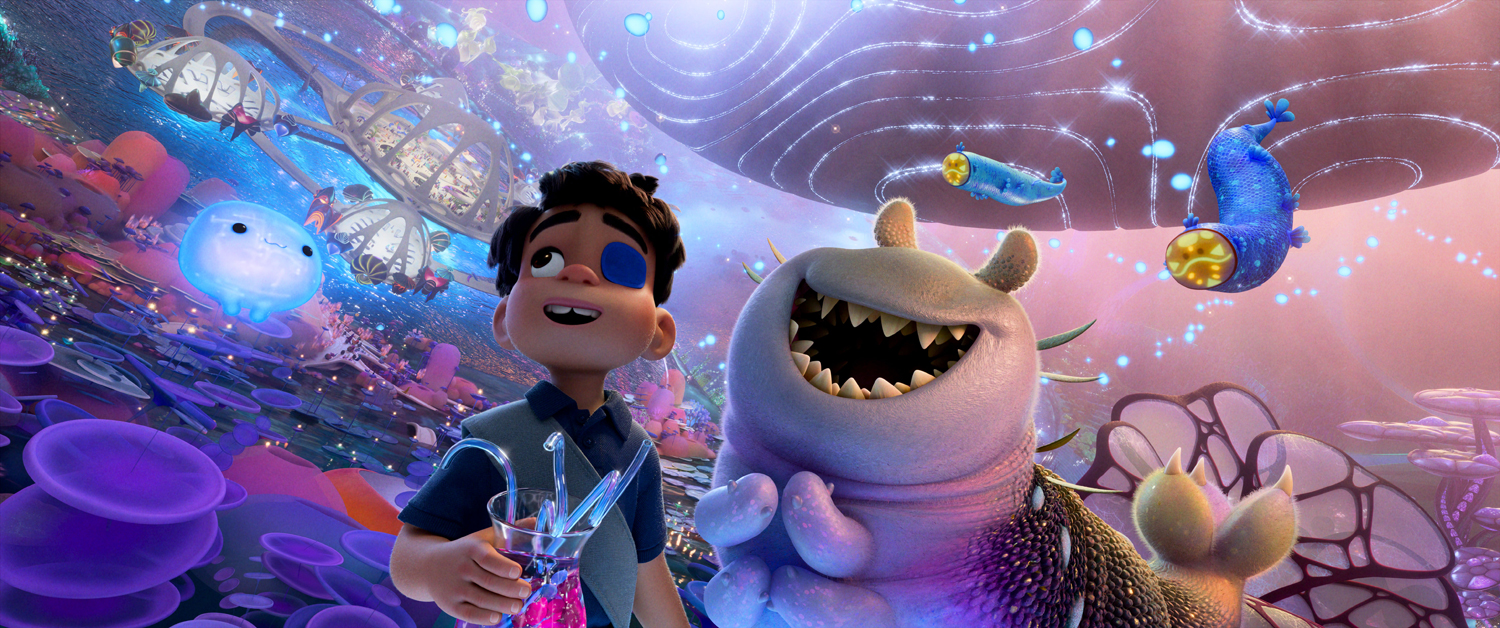
Ooooo (voice of Shirley Henderson), Elio (voice of Yonas Kibreab) and Glordon (voice of Remy Edgerly) in a scene from "Elio." (Photo courtesy of Disney/Pixar)
But then, a funny thing happens. “How to Train Your Dragon” 2.0 gets its act together. It doesn't become apparent right away, but things start looking up when Hiccup meets the dragon he injured, whom he names Toothless. Anyone who's seen “The Black Stallion” knows what happens next, as initial mistrust from the creature, brought to life by CGI that makes him look uncannily like his animated counterpart, gives way to curiosity about this gangly human who's taken a sudden interest in him.
As this boy-and-his-reptile friendship blossoms, so does the movie. Fans of the original know these characters are destined to head into the clouds, and this is where Pope, who shot the film with digital cameras intended to be projected on IMAX screens, gets in the zone. The airborne sequences are rendered as if the camera operator was right there with Hiccup and Toothless, trying hard to get them in focus.
The results are dizzying and exhilarating, a vertiginous thrill ride that prioritizes the characters without skimping on the action. This sense of awe eventually takes over the film, reminiscent of visionaries like Peter Jackson, set to the orchestral swells of John Powell's majestic score.
More importantly, DeBlois finds the heart of the story, even if he gets there through trial and error. He makes us believe in Hiccup's hazardous journey of self-discovery: the teen's realization that he may just have what it takes to bring about the kind of paradigm shift among his people that could turn him into the kind of leader who comes along once in a lifetime.
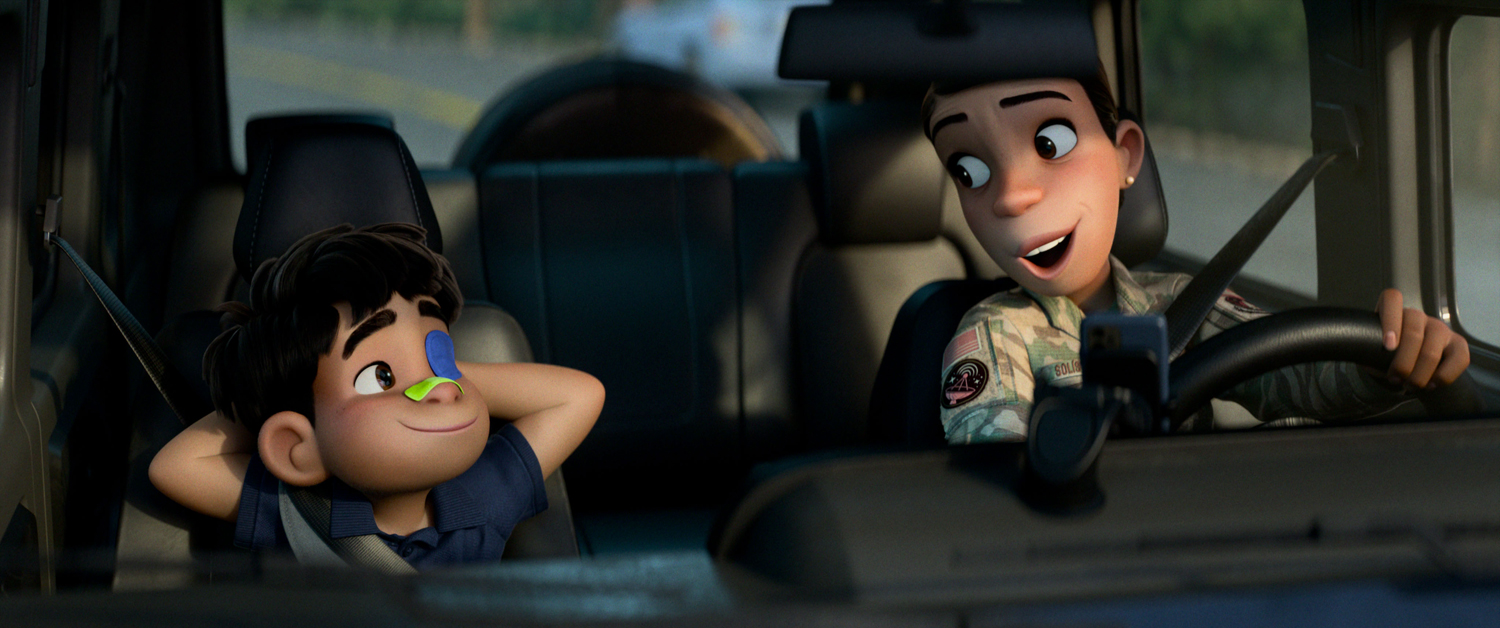
Elio (voice of Yonas Kibreab) and Olga Solís (voice of Zoe Saldaña) in a scene from “Elio.” (Photo courtesy of Disney/Pixar)
It's doubtful anyone will tell you this is the best version of this story (it isn't), but DeBlois has crafted a competent coming-of-age story that makes you forget you're sitting through an unnecessary remake. It's made by a gifted storyteller who one would rather see charting new horizons and moving on to new material instead of cranking out recycled goods.
The Quebecois filmmaker, one of only a handful of openly gay directors currently working in Tinseltown on such a large scale, appears to concede that these shameless cashgrabs are going to continue being made as long as they keep raking in the big bucks, so they might as well be good. Considering that Part 2 is my favorite of the animated trilogy, the ball's in DeBlois' court to ensure the quality doesn't flag. But no pressure.
“Elio”: Less culturally specific, more universal. This was the decree from the powers that be at Pixar moving forward, as the Emeryville, California-based animation studio tried to regain the audience that largely went MIA during and immediately after the coronavirus pandemic.
The purveyors of movies that aim to be all things to as many people as possible haven't quite shaken off an identity crisis in the wake of a period that saw a good movie like “Luca” (an Italy-set fish-out-of-water tale that ought to have been about guppy love but settled for queer subtext) and a great, compulsively rewatchable one like “Turning Red” (mystical red pandas as a metaphor for a Chinese Canadian tween's sexual awakening) being sent straight to Disney Plus, do not pass Go.
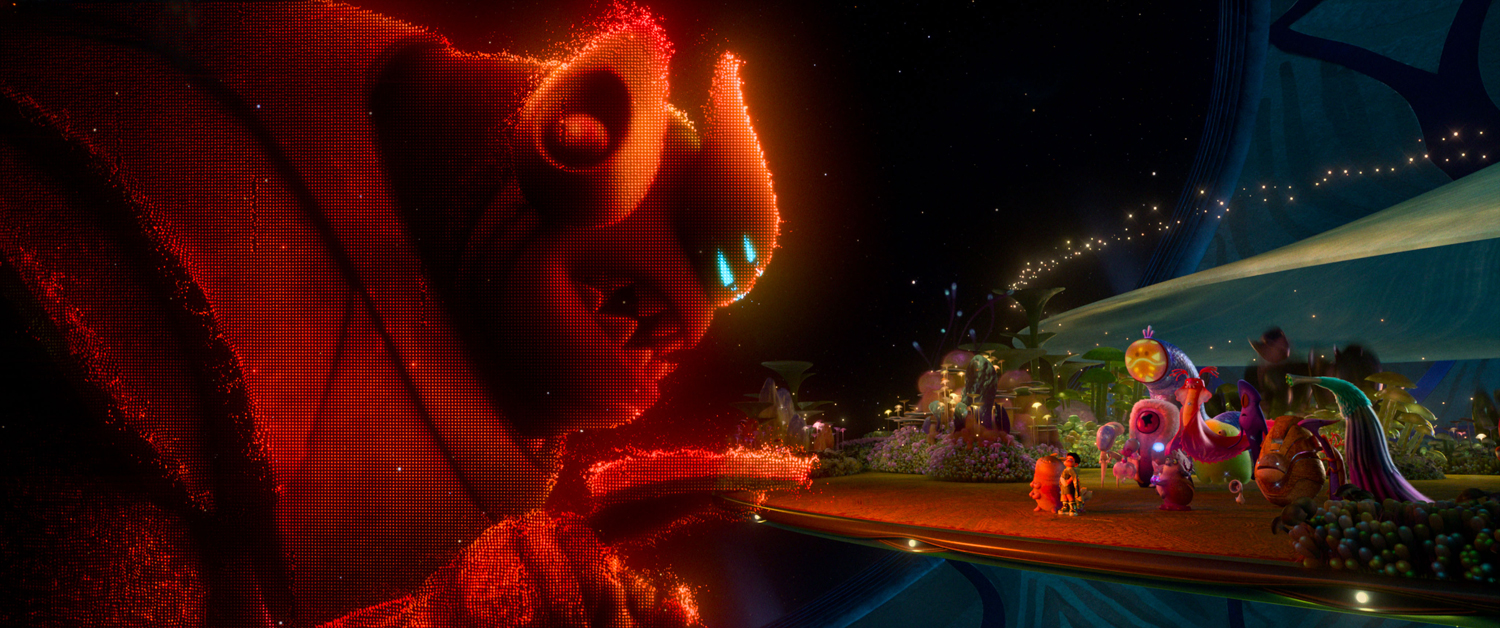
Lord Grigon (voice of Brad Garrett), Glordon (voice of Remy Edgerly) and Elio (voice of Yonas Kibreab) in a scene from "Elio." (Photo courtesy of Disney/Pixar)
So the fact that “Elio,” an alien-contact yarn that tackles grief and loneliness from the vantage point of a child, turns out to be a pretty decent Pixar film should be seen as a small but far from insignificant victory, especially when considering the odds stacked against it.
As the movie opens, the title character, Elio Solís (voiced by Yonas Kibreab) has just lost his parents. The sullen 11-year-old is being cared for by his Aunt Olga (Zoe Saldaña), who's trying to juggle a challenging guardianship with a career in the Air Force that could have led to NASA and outer space for the ambitious major, if it weren't for the responsibility she chose to take on: a withdrawn shut-in of a nephew paralyzed by grief and nursing his own obsession with the firmament. Okay, he wants to be abducted by aliens, something that's conveyed in broad but cute terms.
In the film's best scene, Elio sneaks away from his aunt and wanders into a space exhibit that's not yet open to the public. He switches on an audiovisual display of the Voyager 1 spacecraft's voyage to the edge of our solar system and beyond, accompanied by actual audio from Carl Sagan, the famed astronomer and author of the novel “Contact.”
The movie that follows doesn't quite match the sense of wonder from that scene, but it tips its hat, mostly in clever fashion, to “Contact” (the book and Robert Zemeckis' adaptation), “Close Encounters of the Third Kind” (albeit with a different outcome) and even Joe Dante's “Explorers.” as well as a handful of past Pixar efforts.
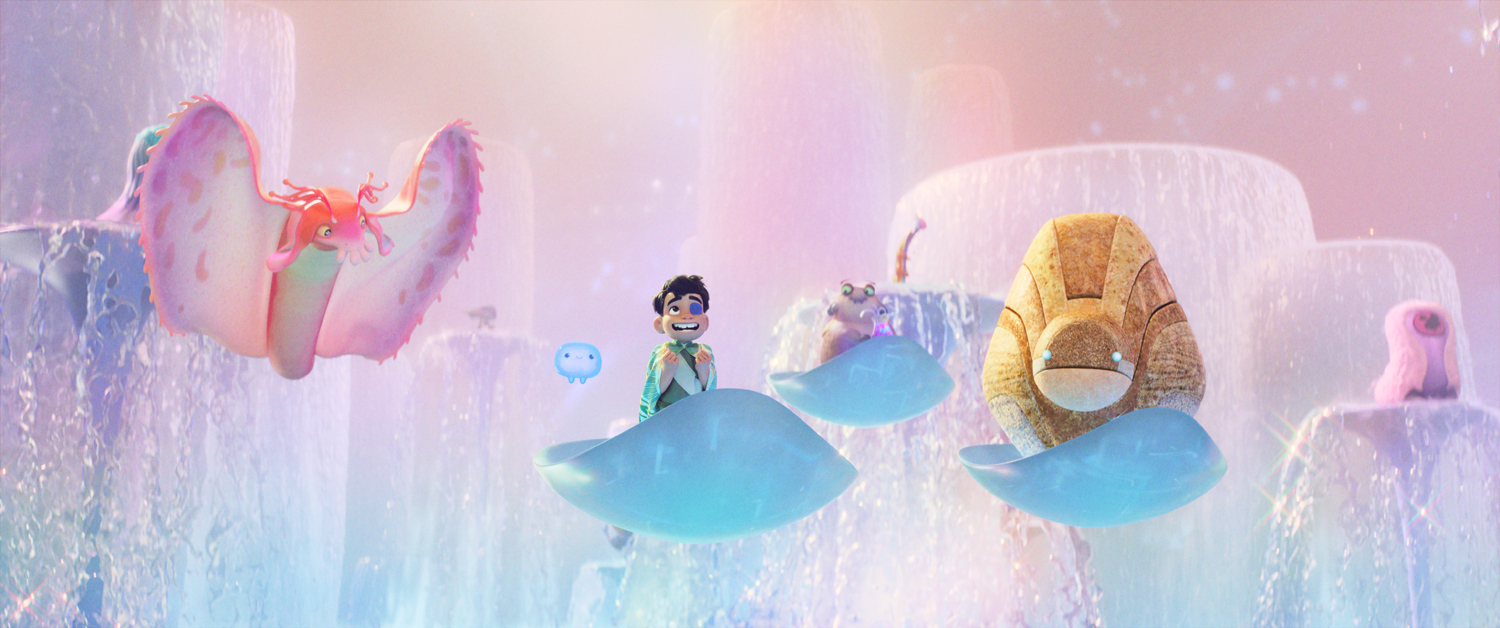
Ambassador Questa (voice of Jameela Jamil), Ooooo (voice of Shirley Henderson), Elio (voice of Yonas Kibreab), Ambassador Helix (voice of Brandon Moon), Ambassador Tegmen (voice of Matthias Schweighôfer) and Ambassador Auva (voice of Naomi Watanabe) in a scene from “Elio.” (Photo courtesy of Disney/Pixar)
The story kicks into gear when the military base where Olga is stationed picks up a signal that appears to be a response to the recording about humankind stored inside Voyager. Elio takes matters into his own hands to make sure these potential visitors from up above hear his plea, and it doesn't take long for them to pay attention.
Elio is wormholed to the Communiverse, an interplanetary organization that's like a loopy riff on the United Nations, even though its ambassadors behave more like bored country club members whose lives are a succession of cocktail receptions, with a little diplomacy thrown in. (I took one look at the nebbishy Ambassador Helix, voiced by Brandon Moon, and my gaydar went off immediately.)
The misunderstanding is straight out of a comedy of errors: The Communiverse bigwigs think they've plucked Earth's leader, so Elio, determined to keep up the charade, has to show himself worthy of admission into this exclusive group, so he can kiss his miserable life on Earth goodbye. Enter the short-tempered and territorial Lord Grigon (Brad Garrett), who desperately wants to be the next Communiverse ambassador and is not willing to take no for an answer. That's Elio's cue to rise to the occasion.
Reconciling the film's diverging tones must have presented a dauting task for the filmmakers. This is the part where I tell you that “Elio” has a troubled production history. Its original director, Adrian Molina, who was inspired by his own experience growing up in a military base, was replaced during production by Madeline Sharafian and Domee Shi, the latter of whom helmed “Turning Red,” and you can feel some of her quirky sensibility seeping into some of the humor here. Actually, Sharafian and Shi do an admirable job of stitching together Molina's more melancholy approach to the material with their more lighthearted flourishes. The film also benefits from some striking background animation.
Still, “Elio” can't quite shake off the feeling that it was assembled by hired hands who want to do right by the material, even if it simply doesn't resonate for them on a personal level. Here's where some of that cultural specificity that set films like “Luca” and “Turning Red” apart would have come in handy, but the estrangement between Elio and Olga feels too nondescript. They're Hispanic characters in name only, and so their relationship doesn't come to life as vividly as, say, Mei Lee and her micromanaging mother in “Turning Red.”
The chasm separating Elio and Olga never rings false, however. The entire film is suffused with what I like to call mom energy, which feels like a comfort blanket, at least until it tries too hard to tug at our heartstrings. Still, when the space dust settles, the pluses outweigh the minuses here, making “Elio” a touching mid-tier entry that shows the light years separating distant planets are dwarfed by the divide between those strangers we call family. To bring these wayward satellites closer together? Well, that's a mission worthy of the most intrepid intergalactic explorer.
“How to Train Your Dragon” and “Elio” are now showing in theaters across South Florida in wide release.
There are IMAX engagements for “Dragon” at Regal South Beach, AMC Aventura 24, AMC Sunset Place 24 and the AutoNation IMAX at the Museum of Discovery and Science in Fort Lauderdale.
There are 3-D engagements for “Elio” at Regal South Beach, CMX Brickell City Centre, AMC Aventura 24 and AMC Sunset Place 24, among other theaters.
 MAIN MENU
MAIN MENU

